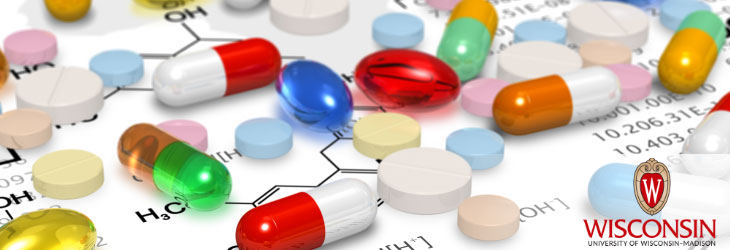Therapeutics & Vaccines

Methods to Screen Antifungal Compounds and Treat Fungal Diseases by Inhibiting Spore Germination
WARF: P180117US02
Inventors: Christina Hull, Mingwei Huang, Sébastien Ortiz
The Wisconsin Alumni Research Foundation (WARF) is seeking commercial partners interested in developing methods to inhibit the germination of Cryptococcus spores
Overview
Every year worldwide, millions of people experience morbidity and mortality as a consequence of severe fungal disease. In the United States, mortality from invasive fungal disease is approximately 50 percent. People with AIDS, chemotherapy patients, and transplant recipients are at highest risk of developing life-threatening infections, but many fungi also cause disease in apparently healthy individuals. The environmental yeast Cryptococcus epitomizes this trend. Like many fungi, infection with Cryptococcus occurs when it is inhaled into the lung from which it can disseminate to the central nervous system (CNS) and cause disease. In the CNS Cryptococcus causes fungal meningoencephalitis that is uniformly fatal without treatment and fatal ~25 percent of the time with the best treatments we have to offer. This high incidence of mortality is consistent with other invasive fungal diseases and indicative of the dire need for improved therapeutic agents.
Current antifungal therapeutics are relatively limited because of high toxicity or insufficient efficacy, because those compounds that interfere with fungal biology or are toxic to fungi, tend also to interfere with or be toxic to humans and animals. While vegetative fungi are similar metabolically and biochemically to plant and animal cells, fungi also sporulate and germinate. Thus, chemical inhibitors of fungal germination are potentially highly useful compounds in antifungal compositions.
The Invention
Given the critical need for improved antifungal therapeutics, UW-Madison researchers have identified compositions and developed methods of treatment for inhibiting the germination of Cryptococcus spores.
The researchers have developed a fluorescence-based quantitative germination assay for high throughput screening for potential germination inhibitors, and a method of testing candidate inhibitors for germination specificity and efficacy. The researchers have determined the mechanisms of action using a novel microfluidics platform, and assessed toxicity and efficacy of lead compounds in cell culture; the researchers are beginning to test some of the candidates in their mouse infection model. They identified four FDA-approved compounds and 108 druggable compounds with germination-inhibiting properties and high potential for further development into effective antifungal therapeutics.
The researchers have worked with a UW medicinal chemist, who reported with surprise that the 108 non-approved druggable compounds fell into eight families, and the researchers confirmed that another 43 similar compounds that had been in the screen were true negatives, which further refines the definition of the relevant candidate structural families.
Applications
- Antifungal drugs for preventing Cryptococcus infections in immunocompromised patients, including those with AIDS, chemotherapy patients, and transplant recipients.
Key Benefits
- This method target spores, which are an understudied, underutilized cell type that can provide another avenue of much-needed drug discovery.
- The identified compounds to prevent Cryptococcus infections includes 108 unapproved druggable compounds and four already FDA-approved drugs with anti-germinant activity with the potential to be repurposed for use as prophylactic antifungal agents to prevent spore-mediated diseases in immunocompromised patients.
Stage of Development
The researchers have identified four FDA-approved compounds and 108 druggable compounds with germination-inhibiting properties and high potential for further development into effective antifungal therapeutics. The researchers have worked with a UW medicinal chemist to further refine the definition of the relevant candidate structural families.
Additional Information
For More Information About the Inventors
Tech Fields
For current licensing status, please contact Jennifer Gottwald at [javascript protected email address] or 608-960-9854